|
It seems like we are just coming back from summer break and already the anxiety over Winter/Christmas Concert is looming. After a few years, it gets more difficult to pick songs that your students haven’t performed yet, and so begins the internet search. Or you’ll get that kid who says, “Teacher, we performed that in 2nd grade,” while rolling their eyes! A few things to consider… It’s a good idea to be in communication early on with your principal. Find out the rules about performing or not performing religious music. Find out what the style of your principal is. You are not only pleasing kids and parents but your superiors as well. Some principals are really easy going while others will micro-manage every aspect and comb through every lyric. I like to have a meeting with my principal at the beginning of the school year and then email them the concert links and lyrics (with any changes) as soon as I can. Be sure to tell them that this is a work in progress so they can put their input into it as well. Here are a few ideas for Winter Concert Themes with some song examples. Winterland Every one likes snow in December. Try a concert with a Winterland theme.
Christmas Around the World Christmas music has a rich history all around the world. A Christmas around the world concert can help kids with different cultural backgrounds feel included.
Multi-Cultural Holiday Traditions You can celebrate different winter and holiday cultures such as Hanukkah, Christmas, and Kwanzaa as well.
Santa Claus Concert A Santa themed concert can be really fun, and if you know someone with a Santa costume, you can bring them out at the end to spread the holiday cheer.
Christian Music If you teach older students or at a Christian school, consider a Christian themed concert.
Shiny Bells How many songs mention bells? Try a shiny bell themed concert and even bring out the jingle bells for the little ones to play.
Christmas Tree Theme Trees are mentioned in many Christmas songs and winter poems.
Rock and Roll Theme Everyone likes an upbeat concert. Let’s rock and roll!
Silent Night Christmas
Hollywood Christmas We all love our favorite Christmas movies during the holidays. Pick some songs from films and television.
Simple Gifts What is winter without the spirit of giving? Try a gift based winter concert theme.
Peace After all the hustle and bustle is over, hopefully we are filled with peace. Here are a few songs for the occasion.
There are so many songs that it would be impossible to list all the themes and songs for each, and of course there is a lot of overlapping in the lyrics. Use this as a beginning and let us know in the comments if you have any more ideas!
0 Comments
Break the Year Up By Month
Start with the school calendar to mark out all the performances for the year and any important events and then choose a theme for every month along with a music concept. Hint: Center the theme around whatever is happening in your performance so things will flow easily when you get busy. Examples of themes are space, scary stuff (for October), animals, rainy days, or the seasons. Examples of musical concepts are rhythm, performance, dynamics, or intervals. Break Up the Month By Week Use the school calendar to mark off any days off and then create activities for each week. I break my class planning by age. Preschool, K-2, 3-5, Middle School, and High School. Let your fun theme help you find activities. You can create folders or notes to help you brainstorm and find the most engaging activities. Use the State Standards Use your music state standards to help complete your lesson planning. Notice I didn't say start out with this? I find it much easier to plug the standards in and use it to polish up anything that I may be missing, than to start with these. I'm sending you a free example of my Music State Standard Checklist for Florida to use as a template and a starting point for your own. Just plug in your own state standards and begin! Tempo DiceKids love to take turns rolling the dice in this fun tempo music activity. You simply sit students in a circle and pass out a small percussion instrument to each one. Remember to go over rules before you pass out instruments. I bought a large foam dice from the Dollar General and wrote the names of the tempos I wanted them to learn on each side. Then I put tape over the tempo terms, so it wouldn’t rub off when little hands started passing the dice around. Tape is also a great way to wipe the dice down after each student to take Covid preventative measures without the ink smearing. One child rolls the dice into the middle of the circle. When the dice stops, they all try to remember what the tempo means. I let everyone shout it out, but you can make them raise their hand. Then the students play their drums for about ten-seconds to the tempo. This helps students internalize the tempo and make a decision to play faster or slower than the time before. I use the conductor motion for silence to get them to stop, because it will be loud. A great way to pick the next student is to have the student who rolled the dice pick someone of the opposite sex who is sitting Criss-cross apple sauce, quietly, with their hand raised. Walking to the Beat - A Fun Tempo Song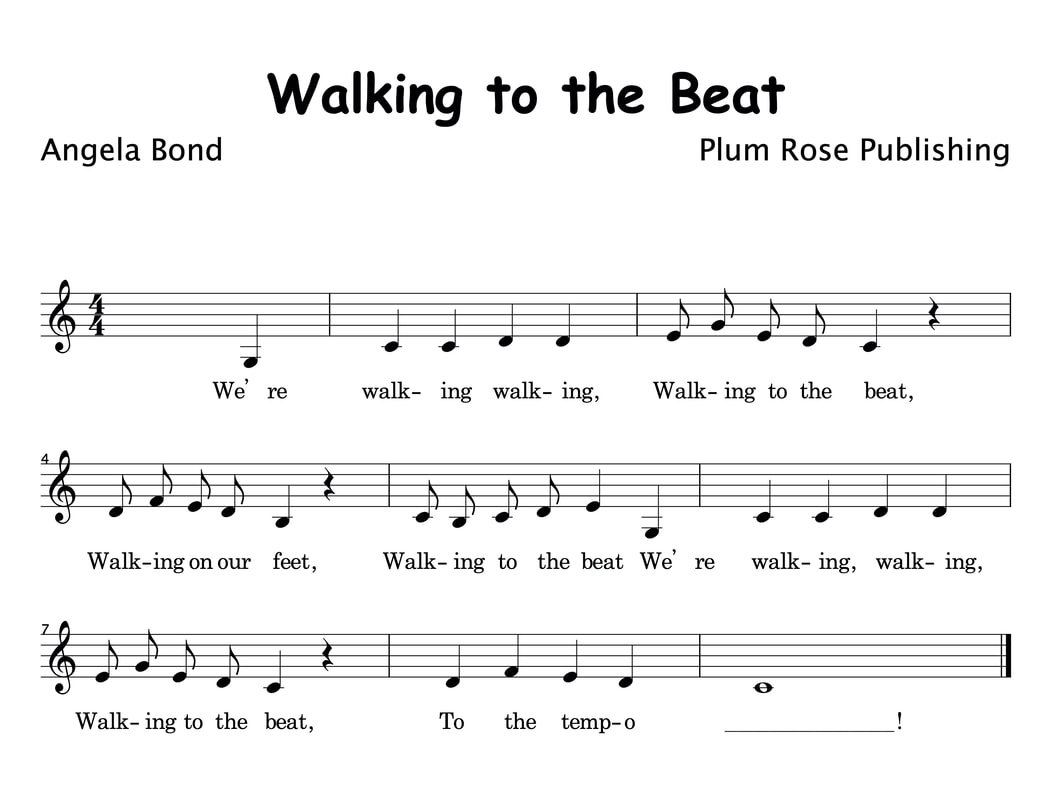 Walking to the Beat has become a class favorite. Give students a small percussion instrument or just have them clap. Students form a circle and chant the song together. At the word “freeze,” (inserted in the space at the end) have students stop quickly and then try to name the tempo they were walking and singing previously. I find that giving them the middle tempo first is a great way to put the other tempos in context. I won’t use fast until the circle and rules have been established and I see that it is safe. Kids will get really excited about this activity. If your classroom is small or has a lot of desks, this is a great excuse to go outside. Tempo PowerPointI use PowerPoint presentations to teach my little ones fast and slow. Slightly older kids get a Powerpoint that has the correct terms on them. This helps elementary students associate an animal or object with the tempo. It also helps solidify new vocabulary. You can have monthly themes that relate to the Powerpoint and tie it in with the songs you are choosing for the class. I love lessons which combine subjects. In this case music is combined with English. To get a Tempo PowerPoint for you class click here.
----------- Need more ideas? Check out the Learn Music Through Coloring Series. These kids music theory workbooks are perfect for elementary grades 2-5th, virtual/homeschool, private lessons, and classroom. Notes, Rests, and Meter: BIRDS is a fun music workbook that teaches kids music theory while also learning about birds. It uses multidiscipline learning to keep music interesting, incorporating music, art, science, math, and the language arts. There are 26 lessons total with gorgeous bird pictures and easy to read explanation pages. Extra attention is given to those topics kids easily forget, such as time signatures, sixteenth notes and rests, and tied notes, so they can be confident with these theory concepts. Note Reading: MARINE LIFE is a fun music workbook that teaches kids to read notes while also learning about marine animal. Music Theory Color By Music: MAMMALS is a fun music workbook that teaches kids music theory while also learning about mammals. Topics covered in this book are dynamics, intervals, tempos, and articulation markings. This is a great way to get a music theory education and have fun at the same time. Finally the series is complete! With the publication of Music Theory Color by Music: MAMMALS this month, the three books will make a full curriculum geared towards 2-5th grade elementary music students. These music workbooks are great for virtual/homeschool, and private lessons as well. Notes, Rests, and Meter: BIRDS teaches everything students need to know about well...notes, rests, and meter while combining interesting facts about animals. This series uses an interdisciplinary approach to learning, using math, science, art, and the language arts to give students a well rounded education which stays interesting. Note Reading: MARINE LIFE tackles note reading in a way that doesn't get overwhelming and even discusses topics like notation history and starts basic scale concepts. By breaking down ideas into shorter lessons, kids can feel confident about what they learn each week. The newest book in the Learn Music Through Coloring Series is Music Theory Color By Music: MAMMALS. This music workbook covers topics like dynamics, intervals, tempos, and articulation markings. Each section ends with an assessment. Students all over will enjoy Learn Music through Coloring. If you'd like to purchase in bulk, email plumrosepublishing@gmail.com for the bulk rate. Otherwise, you can click the link below to buy your copy now.
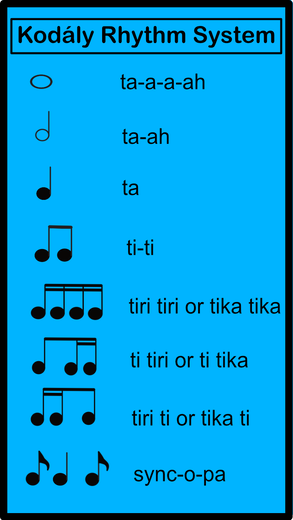 When I first started teaching elementary music, I was adamant about teaching children the correct names of music notes along with their durations expressed just how I know them as an adult musician. I didn’t fully understand the benefits of other rhythmic syllable systems and found them a waste of time. Why not teach a child the correct name for eighth note? Aren’t we encouraging them to use language that in the end means nothing to musicians? “Apple” and “ti-ti” are incorrect. Well, I soon learned teaching rhythm to elementary students using the standard notation number method made my students feel overwhelmed and bored when difficult rhythmic patterns were combined with tedious counting of 1-e-&-a, 2-e-&-a. As I learned that a “fun music class” is a happy music class, I began seeing the benefits of each alternate system, and found that using them increased student participation and understanding. Zoltán Kodály was a Hungarian composer and ethnomusicologist who created the Kodály method of music education in the 1930s. Kodály wrote, “To teach a child an instrument without first giving him preparatory training and without developing singing, reading and dictating to the highest level along with the playing is to build upon sand.” He spent his life perfecting music education, using a combination of methods such as Curwen hand signs, the pentatonic scale, movable Solfege syllables, the Dalcroze rhythmic movement technique, and Rhythmic syllable notation. Rhythm is simplified to nemonic syllables such as ta and ti-ti using the Kodály approach. In this way, young children can learn to express rhythm separately from reading music notation.
There they are. Twenty-five students all lined up and staring wide-eyed at you. You know you need to warm them up, but are afraid this will be the "boring" part of the lesson. Don't give up on warm ups yet! Here are five elementary music choir warm ups kids love. I've compiled and tested these myself.
1. SSS Contest Have students stand up and then direct them to all take a deep breath at the same time and let it out on the sound "ss." When each student finishes their breath, direct them to sit down. The last student standing is the winner. (You can give them a prize/sticker if you'd like.) Tip: If you think someone has cheated, pick a few classmates to be judges and watch the others. Going back to class can be daunting after a long summer break. Elementary class is filled with miraculous moments of children coming together in beautiful harmony, learning that Christmas concert song just in time, or giving you a fond smile as they hand you a handmade gift with a note that reads, "Best Teacher Ever." But there are also those times when eyes role, children group together to exclaim how much they hate an activity, and one sincere question from a student sends the class into chaos. Let's be honest, you may be hesitating a little on finalizing your lesson plan this year, and with good reason! Will you meet the Music State Standards? Will you end up boring kids with too much theory? Here are ten steps for a successful elementary school year.
1. Procedures, procedures, procedures Before you roll out your lesson plan, mentally go through every aspect of your lesson time from the first second you see them until the very last student exits the room. You can't decide to have a morning activity if you don't know how they enter the room. Will you set the activity out? Will they form a circle? Sit in seats? Is there a welcome song? What does their homeroom teacher say to quiet them? If there are books or papers, how do they pass them out or collect them? Channel summer excitement and keep students engaged at home with these summer-themed music coloring pages!
Click the link below to access the coloring pages. This is a fun review of music notes, rests, dynamic, and other music terms for your students. This package includes ten simple Summer themed music review color by music pages for elementary students to do at home, private lesson, or in the classroom. This review covers: Notes, Rests, Dynamic, staff, and clefs and includes an answer key! This product is great for little musicians to use at home during school closure or summer holidays. Easily use these coloring pages for distance learning by sending .pdfs and instructions for your students or their parents. Answer keys are provided for parents or a sub to check and assist kids when they are having trouble. Get your summer review pages here. *All pages may be colored with a 24 crayon set or 8 basic colors plus pink. ************************************************************* You might also like: Learn Music Through Coloring Birds: Notes, Rests, and Meter Music Conducting Quiz Time Signature Coloring Page 2/4 3/4 and 4/4 If you have any questions, please feel free to ask. I am happy to help! My Website Follow me on Pinterest Send a message on Facebook __________________________________________________ #distancelearning #MusicatHome #Music #distancelearningTPT #privatelessons #sublessons Covid-19 has changed the music industry forever, but the music industry has not been crippled. If anything, musicians have shown the world their resilience. When concert venues shut down, live streaming gained popularity. When the doors shut to private lesson studios, teachers took their students online via Zoom and other platforms. But what will music education look like in the 2020-2021 school year? Is music education in jeopardy as school districts make decisions about the budget after the world’s largest recession?
by Angela Bond
I remember going to college for my BA and being forced to take the general requirements for music theory. I had taken all the theory classes at the community college level so I could transfer out of theory at the upper level, only to get partial credit on my entrance test and have to repeat one class. Admittedly, I was very good my second time around, but when I encountered theory at the masters level, I was again hit by that feeling of impending doom. After encountering student after student scoff at music theory, I wonder, Why is music theory so hard? Is Music Theory Irrelevant? I don’t think music theory has to be difficult. You can break it down to the smallest ideas and anyone can learn. I believe if two problems are addressed, music theory may return to its former glory. The first topic to address is relevance. Just face it, how many students have to know counterpoint in the real world? The riskiest yet most necessary thing for us to do as a society is regularly overhaul our systems. We should constantly be looking towards the future, to ways we can better ourselves and make overall improvements. |
|
Contact Us:
By Email: info@plumrosepublishing.com By Mail: PO Box 6917 Hudson, FL 34674 |
We use PayPal: PayPal accepts Debit or Credit Card
Price plus tax and shipping and handling
Price plus tax and shipping and handling
company id 100


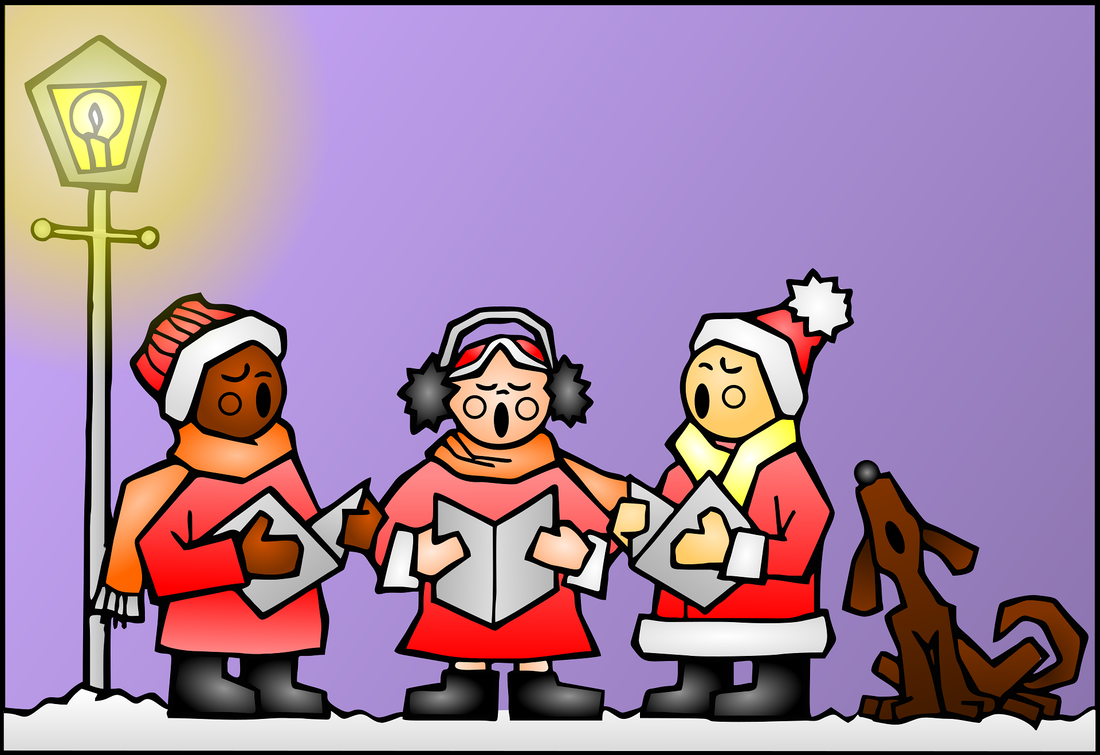

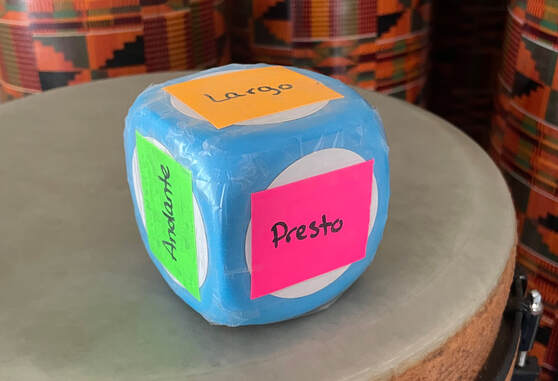
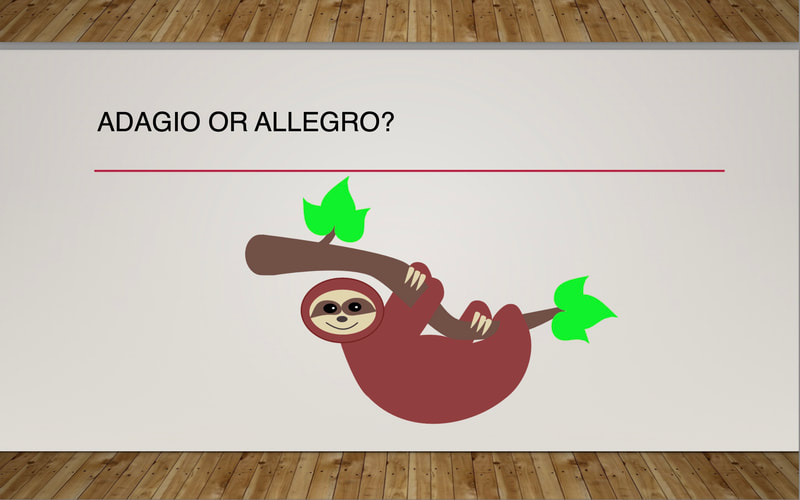
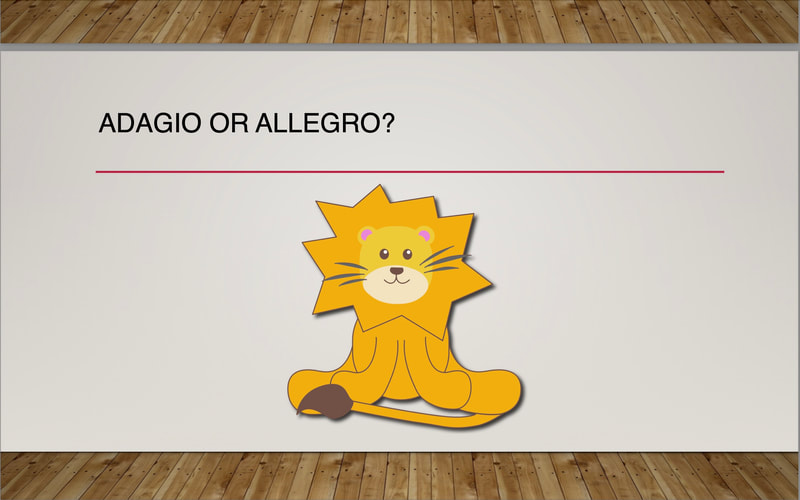
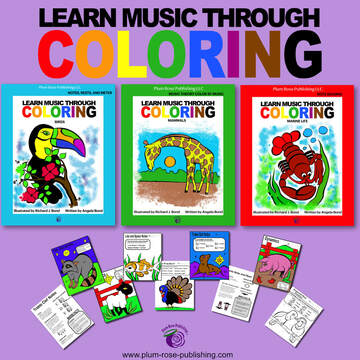
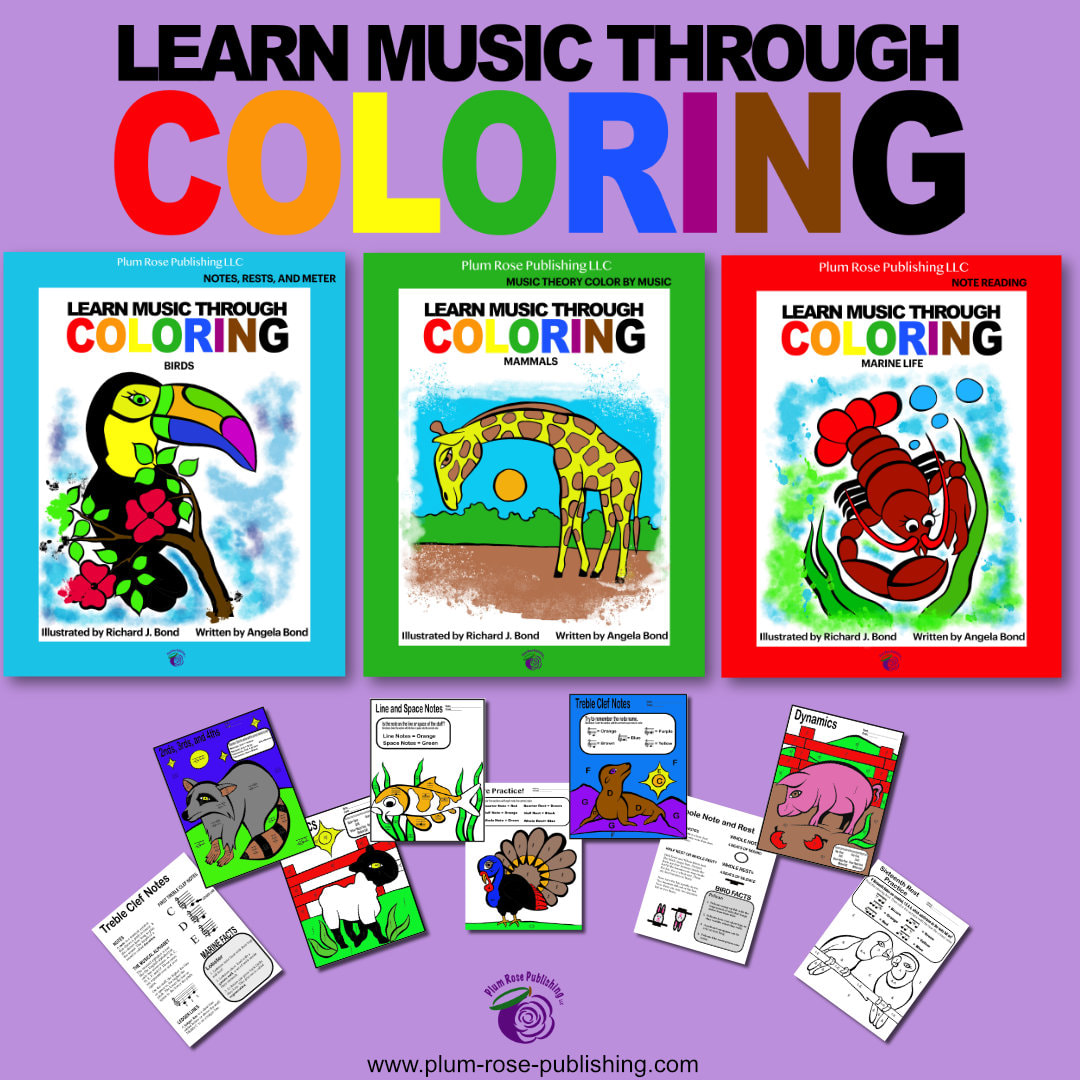
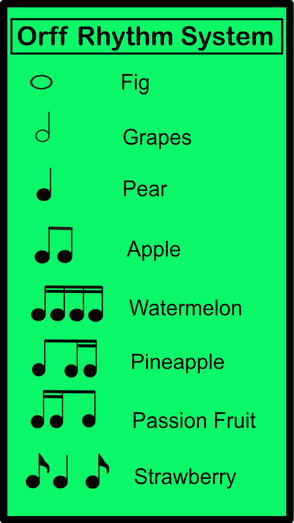


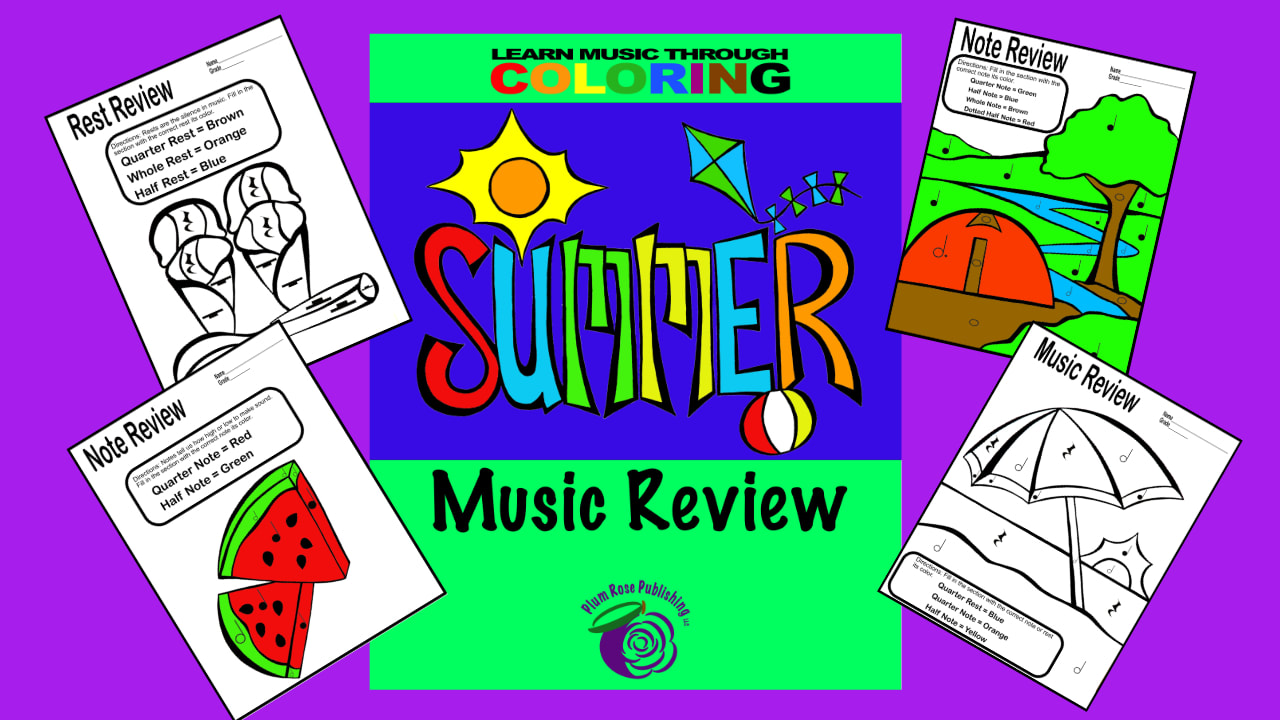

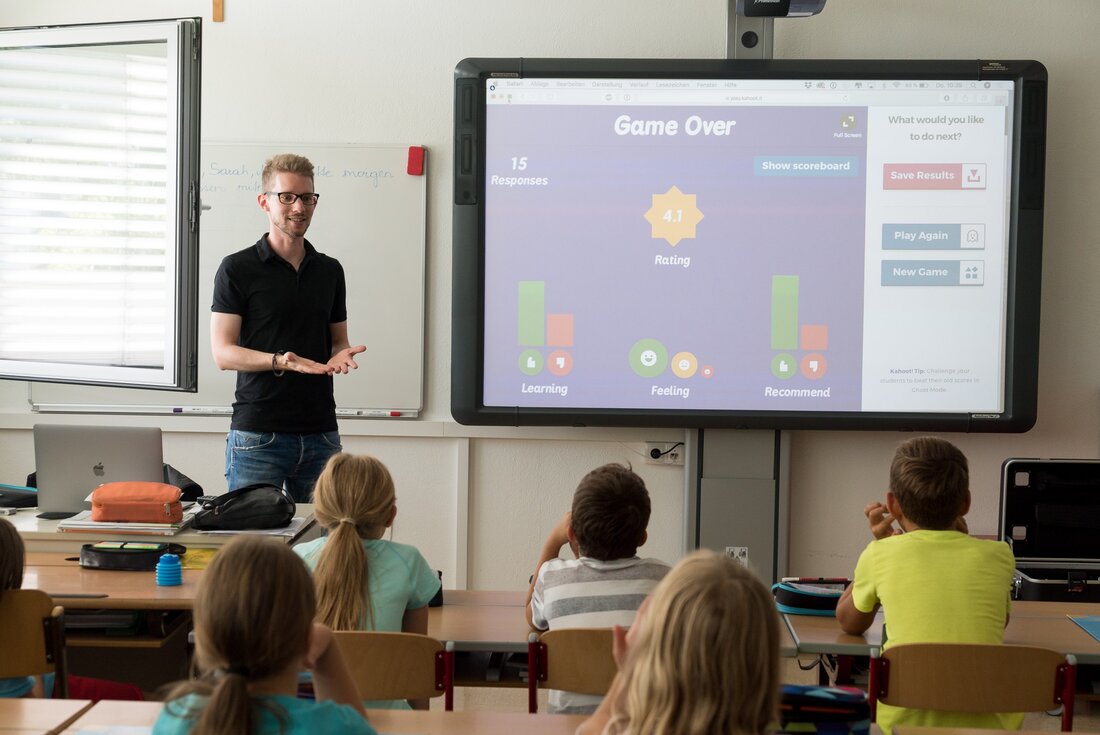
 RSS Feed
RSS Feed